(Gerry Furth-Sides) Yes! Cheese is what comes to mind when you say “Pecorino”. But the name of favorite zesty cheese has another new meaning in the wine world for a compelling white wine. It a single grape, crisp, aromatic that is of the highest calibre and astonishingly inexpensive.
Still, Food Pairing is key because of the salty, nutty-tart cheese, that mutually enhances the bracing acidity and fleshy stone fruit of the wine. It is perfect with seafood because it holds the minerality of the Appenines and the salty finish of the Aegean sea for an added thirst-quenching character. The terrain, hugged by high mountain and the Adriatic sea, infuse it with a briny finish to make it almost invigorating. And there is no skin contact that translates into a crisp and refreshing character. As surprising as any of the other deserving ABRUZZO characteristics is its affordability although there are also high-end choices to fit into the most extravagant desires.
No less than New York Times wine critic Eric Asimov featured two indigenous Abruzzo wine grape varieties in his column on “Ten Grapes Worth Knowing Better.” Pecorino and Trebbiano d”Abruzzese — and recommended Abruzzo producers. With 65% is already exported annually, the bulk of it to Germany and the US. So it is available.
We learned about the wine at the event, “Discover the portrait of Abruzzo Wines. The campaign from the European Union is called, “The Charming Taste of Europe.” We attended: “Pecorino, the White Wine of the Future” This individual series highlights the more unusual items. For information, please see: //charmingtasteofeurope.eu
The takeaways, there is no skin contact which means a crisp and refreshing character. The grape is happy all the way from the highest mountain slopes of the Apennines to the sea. The terrain closer the sea infuse it with a briny finish to make it almost invigorating.
We can say the Pecorino growing region is the seller and the cellar of Italy. Pecorino is grown in Abruzzo, a big region of immigrants. About 65% of New York Italians are from Abruzzo, possibly because its such a rough climate and terrain.
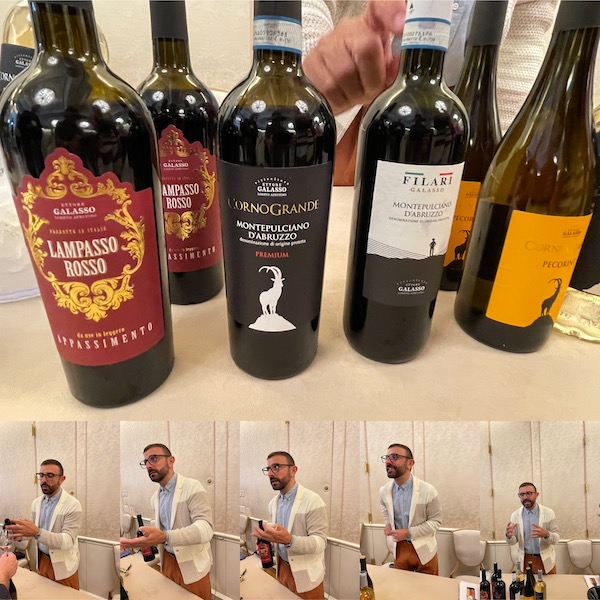
At the same time, Pecorino almost became extinct because of the effort it takes to grow the grape on mountainous terrain which has ZERO flat land. Even after centuries of winemaking, Native Italian grape, Pecorino fell into obscurity and almost became extinct before its revival in the mid1990s.
The fickle, often low-yield grape was rescued singlehandedly by trailblazing, usually contemporary winemakers who follow the concepts of viticulture and grow bio-dynamics. The single varietal holds from 12-14% alcohol content.
This was brought out at the seminar led by determined, very excited lifetime teacher, Gold Pin professional sommelier Diego Meraviglia. He emphasized the relatively recent qualitative growth of this Abruzzo wine, similar to what happened in Puglia before it. Standards rose dramatically during the revamp, as they did with Italian Chianti.
Pecorino grapes are delicious. The sensitive, expressive grape has an exceptionally high sugar content because of the terroir. This makes it the kind of complex grape at its best when young. Yet it is age-worthy because this sugar content is beautifully balanced by bracing acidity and complex minerality.
ABRUZZO PECORINO COSTA DEL MULIMO DOC 2021 Cantina Frentana really lets you taste the stainless steel barrel aging that allows the grape flavor to take over.
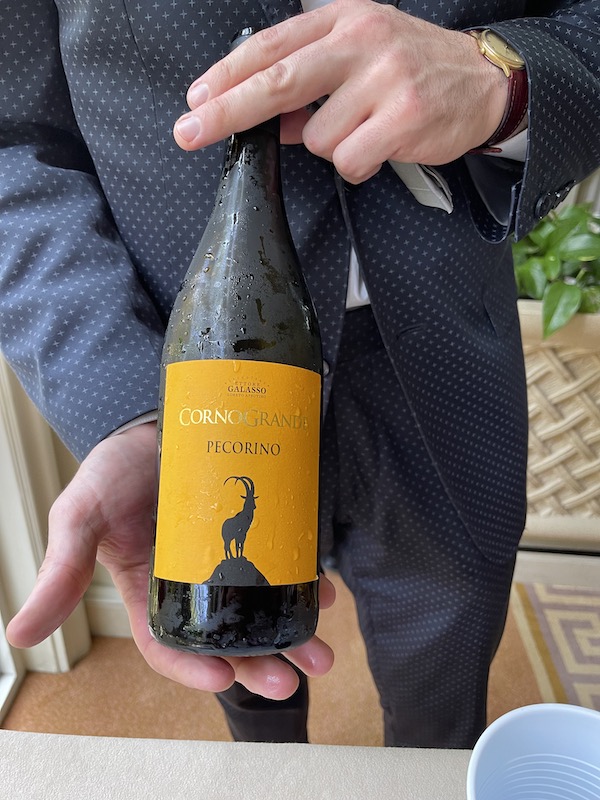
A small, delicately pale grape, Pecorino thrives in Italy’s mountainous Abruzzo region (also Marche, Umbria, Liguria, and Tuscany). Terroir is key, bordered by the Apennine Mountains to the west and the Adriatic Sea to the east with its higher rocky slopes and lower coastal influence influences and inspires its “finicky” nature. The mosaic of microclimates is considered almost mystical. The territory made up of clay, limestone, and gravel soils also benefits from maritime influence, altitude, and cooling winds. And water is never an issue.
Diego told us that the name comes from “pecora” or “sheep,” in Italian. It honors the sheep and shepherds who ate them along the route from Abruzzo to Puglia that shepherds used every fall well into the 1950s. The story goes that the shepherds compensated the vineyard owners with cheese.
Pecorino wine prices are astonishing in light of the complexity you can find in a relatively young, affordable bottle. The wines we tried averaged $15 a bottle. From the start they two-dimensionally crisp with character, noticeable terroir, a richer flavor profile than other “fresh” white wines
Notes of soft fruit, florals, dry herb, minerality, all balanced by freshening acid and a slightly heavier mouthfeel, thanks to the sugar in the lower end price range. Higher-end bottles that cost $200, come complete with a “Provenance Guarantee.”
Pecorino is versatile: It minerality and because it is aged in stainless steel vats retains its pure flavors. They usually go unoaked, or “with just a kiss of oak.”Pecorino wines’ dry, soft, herbal notes make them a natural match with fish and shellfish as we experienced at lunch. The dry soft herbal notes found in some bottles also make them a natural match for complex, wintry flavors, such as the prime rib.
We remembered an earlier seminar and drinking a Pecorino in this exact same room in March, 2018! The day highlighted the more northern Marche area. It is fascinating this area is known now for its shoemaking tradition, the finest and most luxurious Italian footwear.
Abruzzo, on the other hand, comprised almost in its entirety of rolling hills and fertile plains at the base of the Apennine mountains, facing the wild beaches, is known for its ancient towns perched on hilltops. And, no wonder, as the area from which most immigrants come (65% of all NY Italians are from her).
Salud.
Read out articles on the wine regions near Abruzzo!

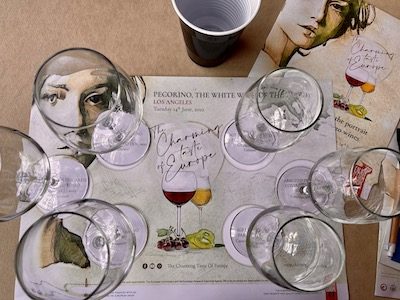
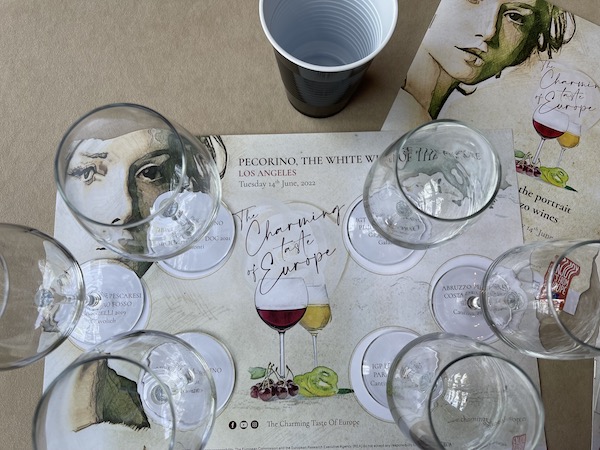
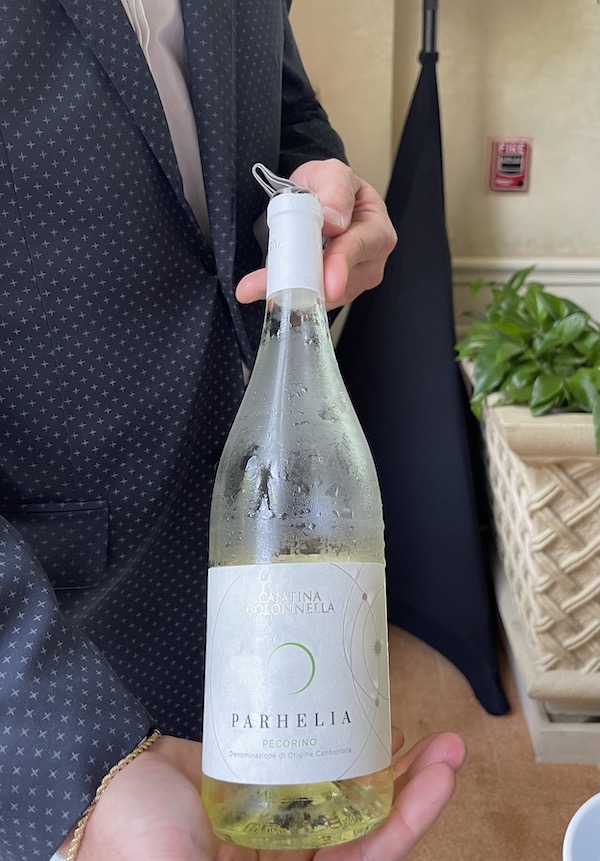
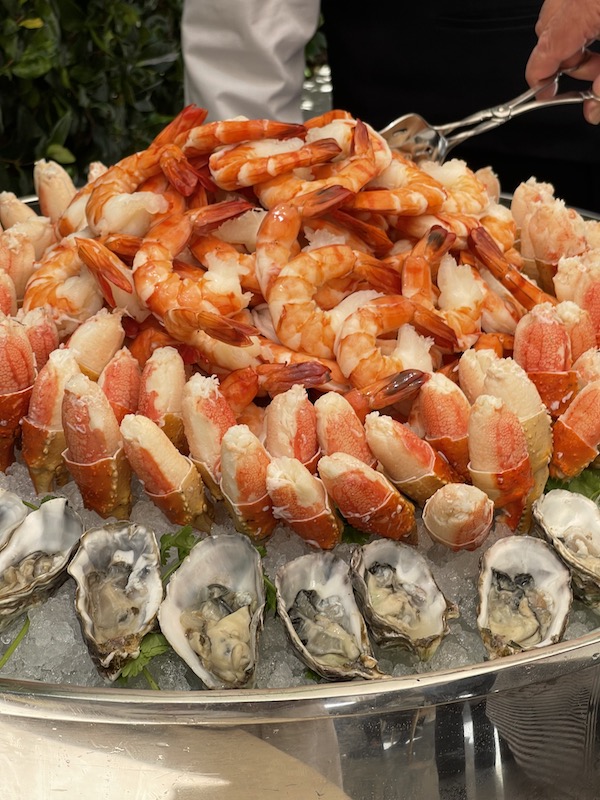
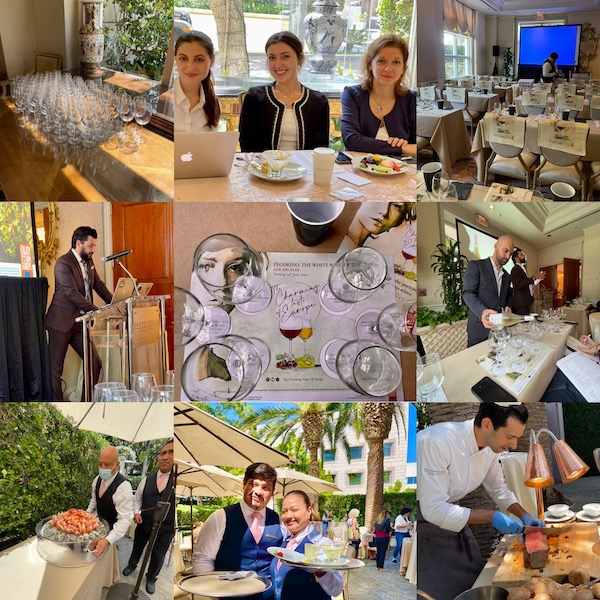

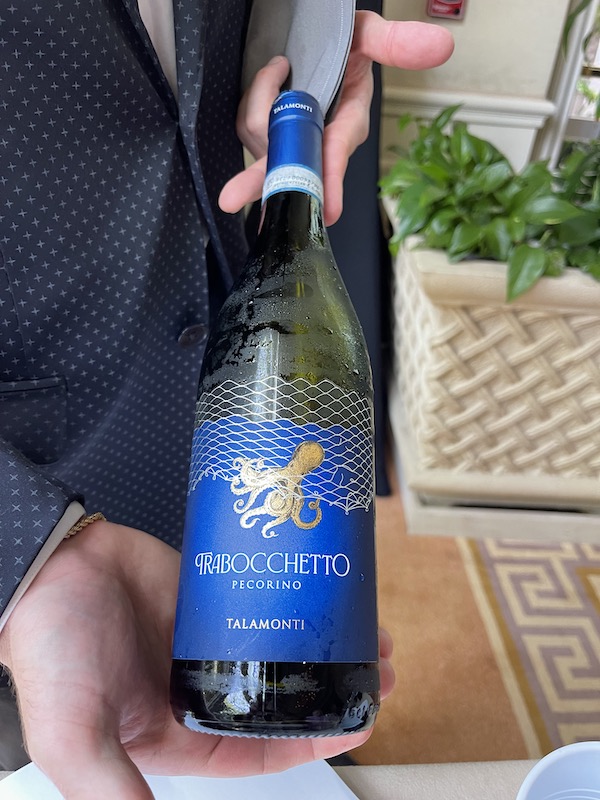

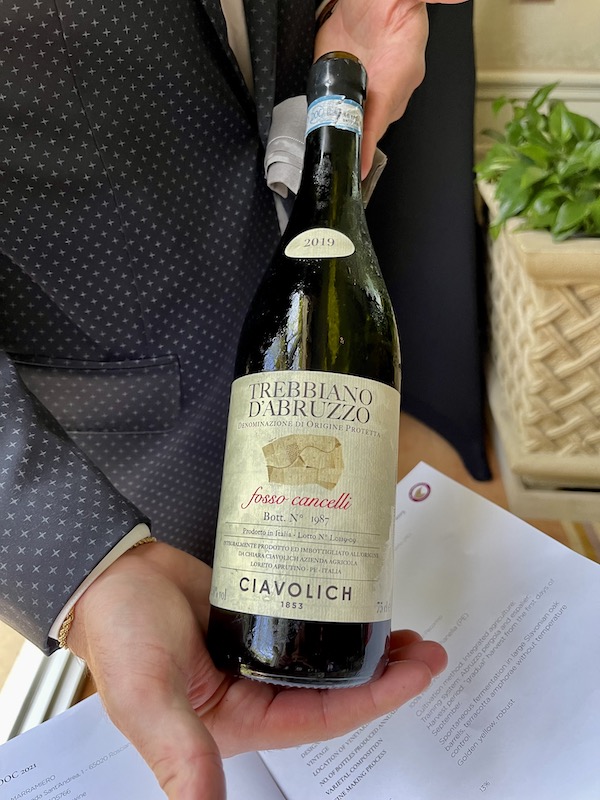
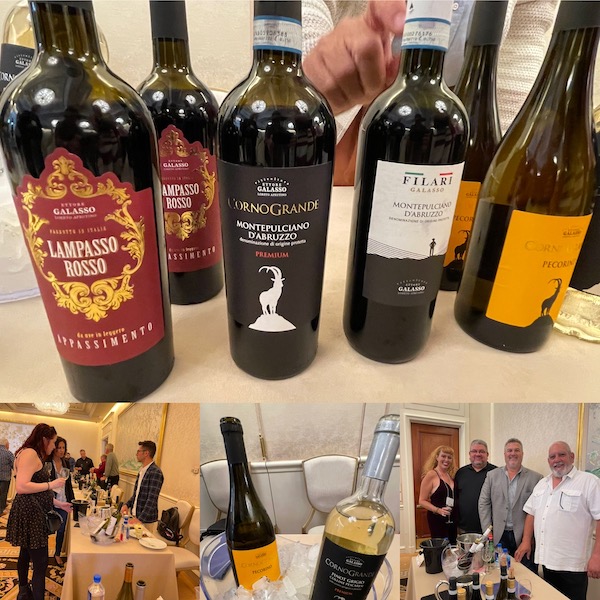





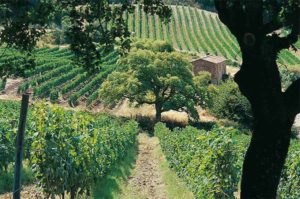





 Gerry Furth-Sides
Gerry Furth-Sides  Barbara Hansen
Barbara Hansen  Chef-owner Alain Cohen
Chef-owner Alain Cohen  Roberta Deen
Roberta Deen  Jose Martinez
Jose Martinez  Nivedita Basu
Nivedita Basu